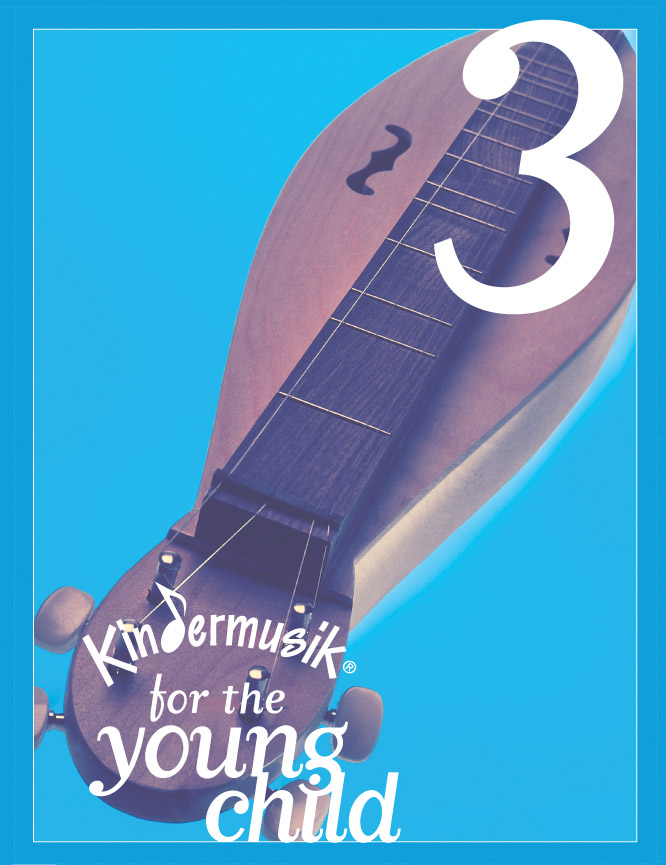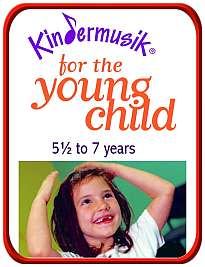Build a Musical Foundation
Using a small-group approach to music education, Kindermusik for the Young Child provides a pressure-free class where your child can develop a strong musical foundation by learning the concepts, language, notation, and vocabulary of music and its greatest composers.
The program is designed to prepare the young child who is eager for first experiences with musical symbols and instrument discovery but is not yet ready for formal lessons and traditional music reading with an instrument. Parents or caregivers are encouraged to attend the last 10-15 minutes of class.
Young Child Unit Descriptions

What A Parent And Child Will Experience In Class
Singing and vocal development It may sound like a foreign language when a child sings “ta” and “ti-ti,” but this is the language of professional musicians and composers and getting young children ready to read and write simple rhythm patterns.
Movement See children dance expressively to music, giving them the practice they needs to coordinate their body movements to the sound of music. This kind of musical play not only improves musicianship, but physical coordination as well.
Reading and writing Young children will learn melodic notation and identify pitches such as the C, A, and D notes on the treble clef, plus rhythmic notation. Eventually even composing their own music.
Focused listening Children will learn to identify a range of orchestra instruments and their sound qualities, while also gaining an early awareness and knowledge of composers and masterworks in Western arts tradition.
Exploring and playing musical instruments Authentic percussion, string, pre-keyboard, and woodwind instruments expose children to the many choices for future musical study, and at the same time provide them with the opportunity to musically succeed before taking on more formal instruction.
Unit Descriptions
 Semester One Semester One
Everything your child learns later in semesters 2, 3, and 4 begins with this early introduction to singing, reading, and writing music and rhythm. Through dances and games that focus on rhythmic development, we'll learn a keyboard instrument—the glockenspiel—which will be used throughout all the Young Child classes. Your At Home Materials provide the music, instruments, stickers, and activities for a home version of the same playful activities you'll hear about from class, so your child—and you!—can learn where you're most comfortable: at home.
Home Materials: Children’s Folder with stickers, games bag, and Music At Home Cards, Family Songbook, Home CD of music from class, glockenspiel, and canvas bag (during first semester).
 Semester Two Semester Two
Playing simple musical patterns and songs on the featured instrument from the first session—the glockenspiel—is a central focus this semester. While learning to sing a melody, and then play the pattern on the glockenspiel, we'll delve deeper into the understanding of musical concepts such as piano and forte through orchestra-style music such as the William Tell Overture and Peter and the Wolf. Music appreciation and understanding continues with a complete introduction to the instruments—and the families in which they're grouped—of the orchestra.
Home Materials: Children’s Folder with stickers, games bag, and Music At Home Cards, Family Songbook, and Home CD of music from class.
 Semester Three Semester Three
Appalachian music is a featured musical style this semester. First, you and your child will build a two-stringed dulcimer instrument with materials that we'll provide. Then in class we'll learn to play chords and simple melodies on the instrument you built together. We'll also explore rhythm concepts through dance with an introduction to the basic steps in jazz, ballet, and tap dances. Your Home Materials include dulcimer-making materials, activity cards, and music that features recordings from Appalachia, African-America, and Native American music, as well as the Western Art music of the Nutcracker Suite.
Home Materials: Children’s Folder with stickers, games bag, and Music At Home Cards, Family Songbook, Home CD of music from class, and dulcimer.
 Semester Four Semester Four
In this final semester, we'll introduce the recorder instrument. As your child is introduced to basic methods of playing simple melodic patterns and songs on this wind instrument, we'll also incorporate the instruments, concepts, and songs from previous semesters. With a special emphasis on multicultural music, your child will learn to improvise and write music, as well as experience the musical styles of the Pacific Islands, Europe, and Africa; plus play special dances and children's games from around the world, including Alpine dances, Mexico, and Ecuador.
Home Materials: Children’s Folder with stickers, games bag, and Music At Home Cards, Family Songbook, Home CD of music from class, and soprano recorder.
|



 Semester One
Semester One Semester Two
Semester Two Semester Three
Semester Three Semester Four
Semester Four